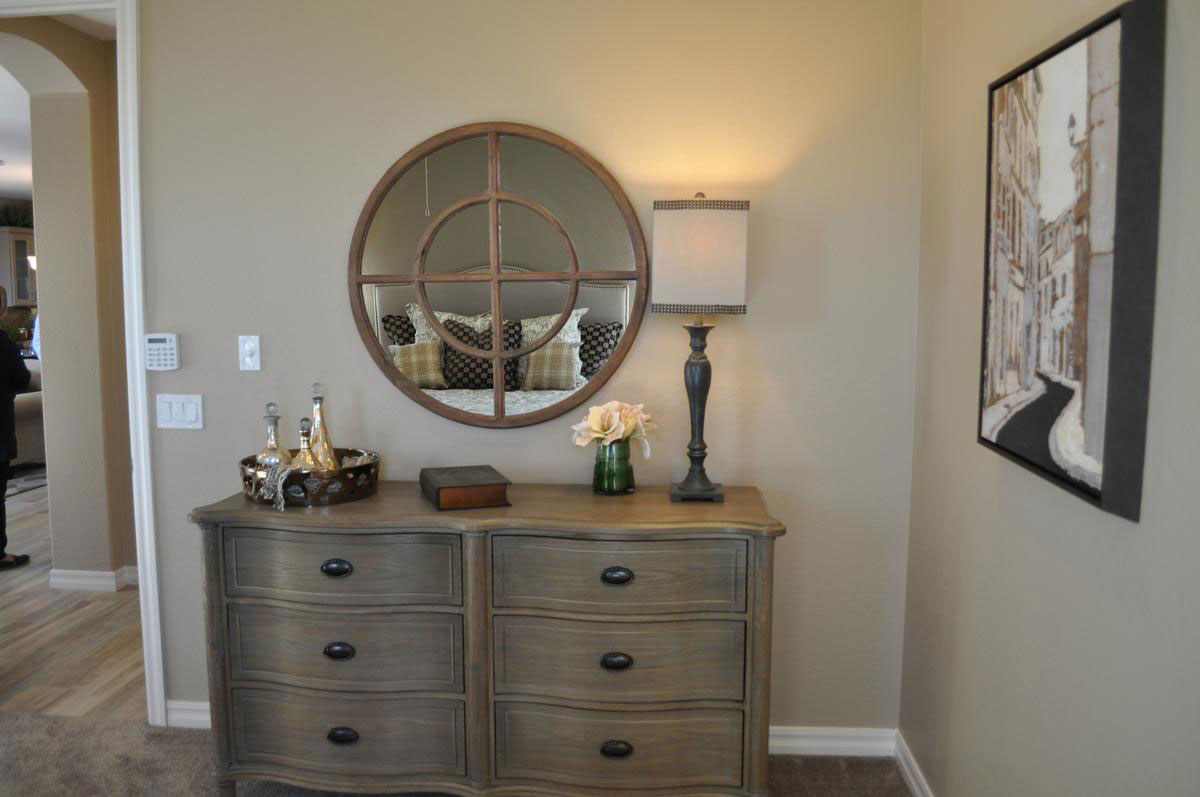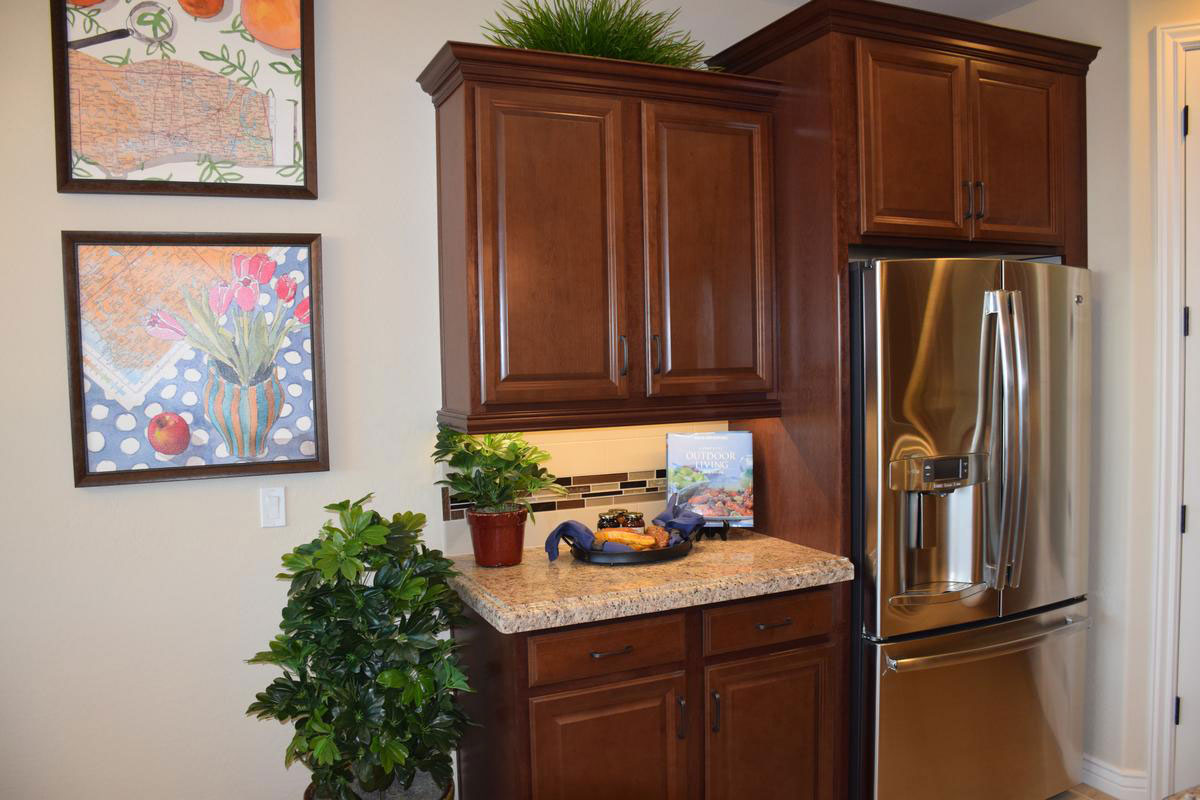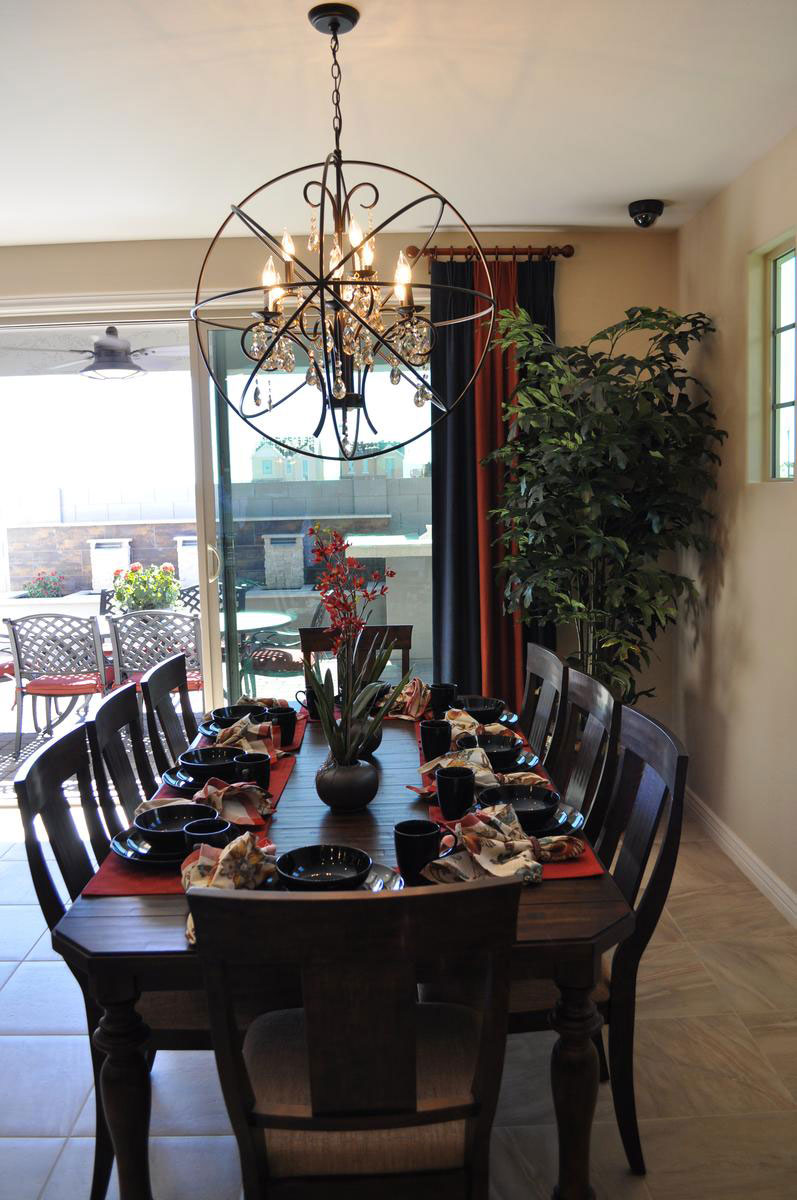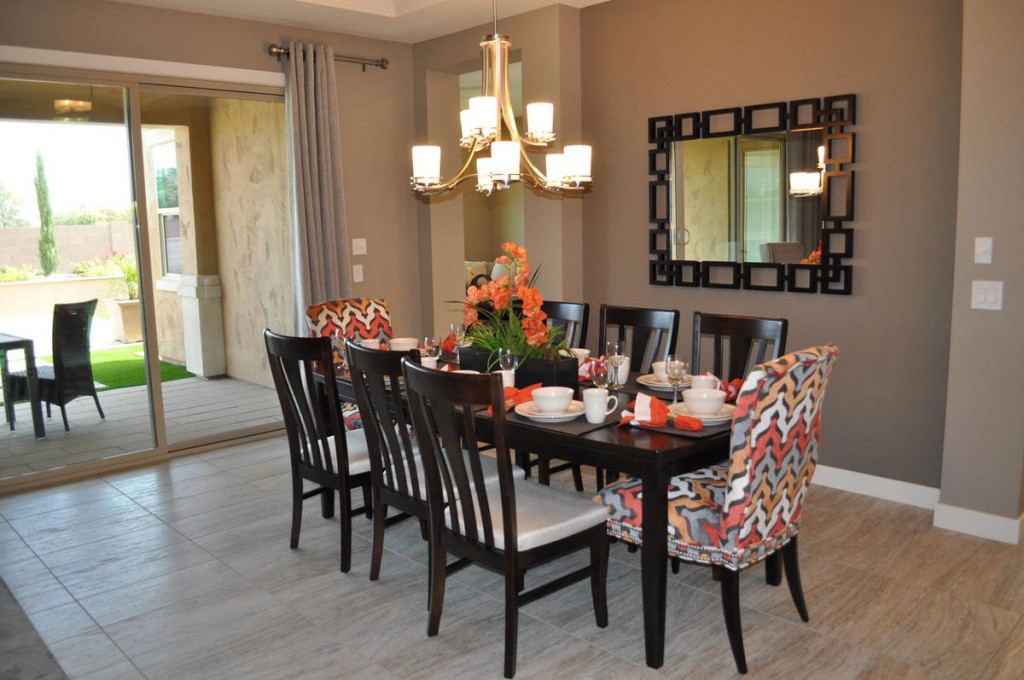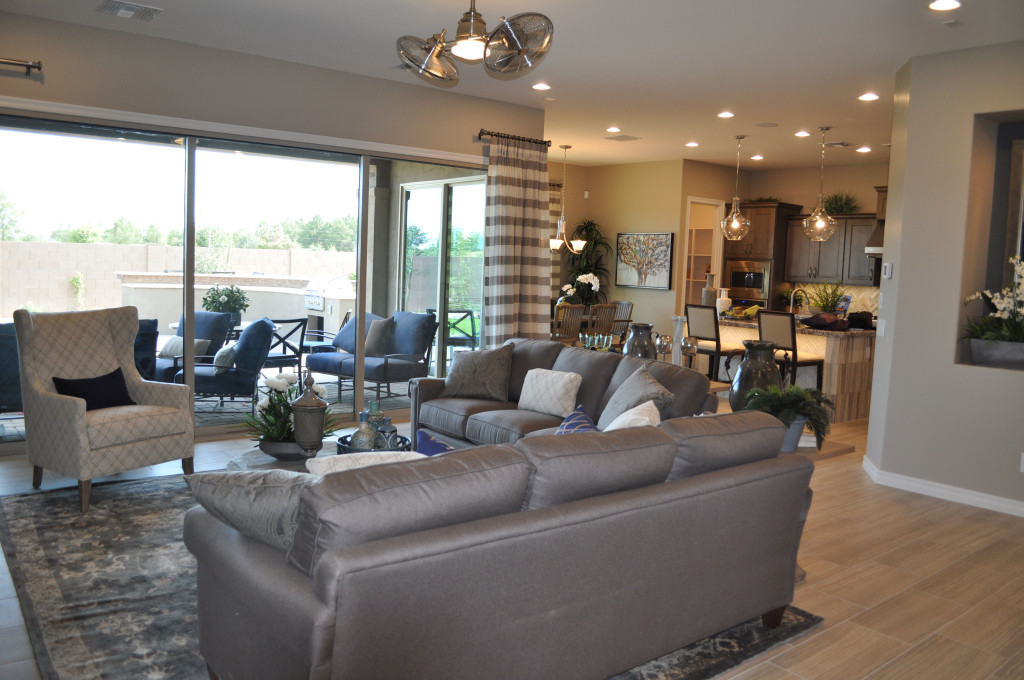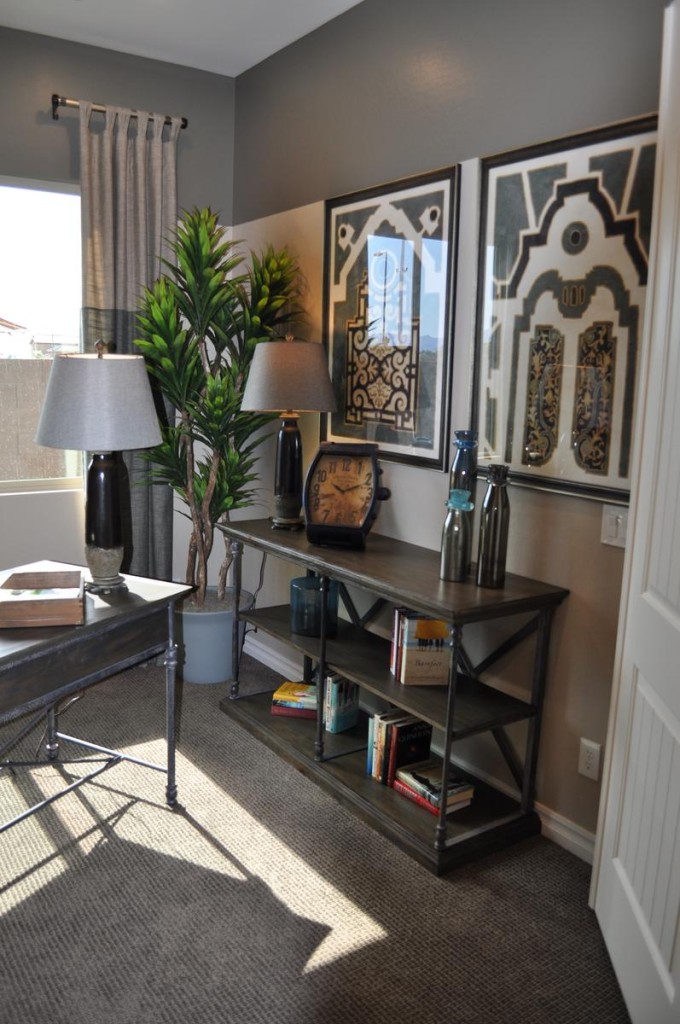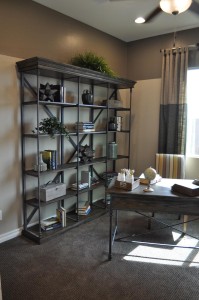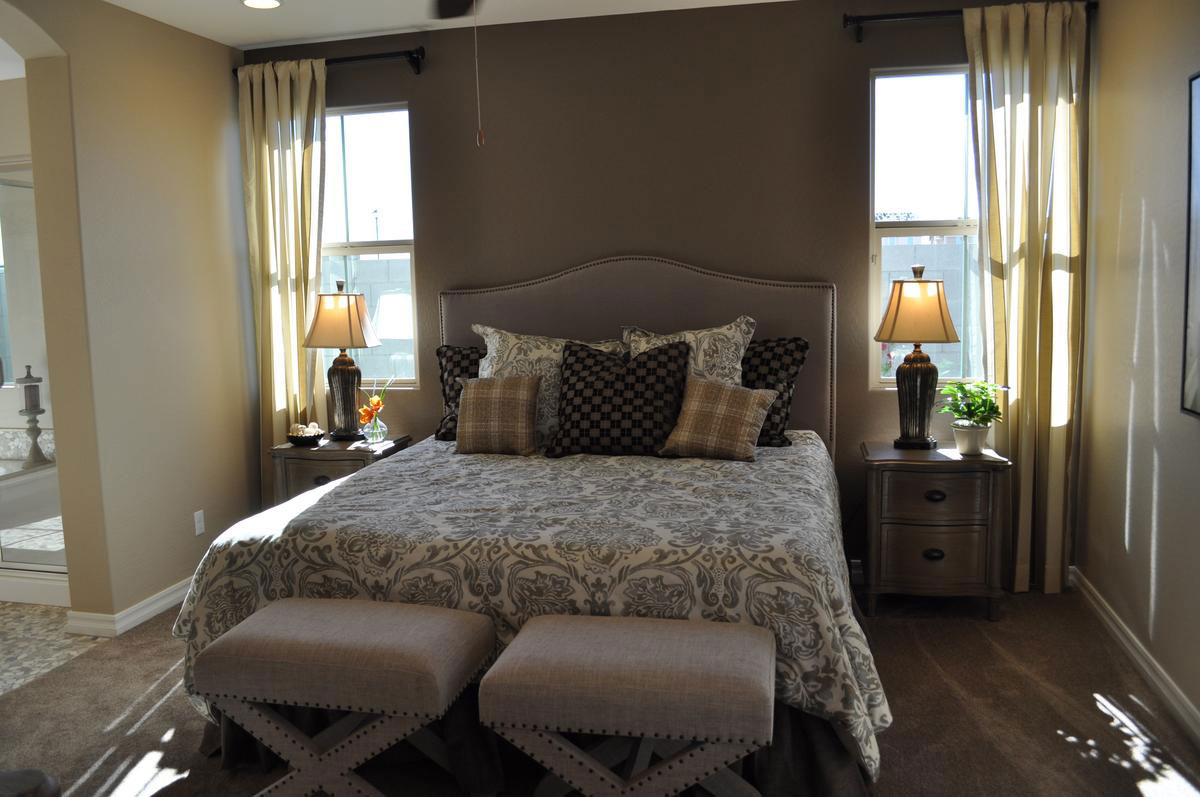 When you’re planning your master bedroom, it doesn’t take a lot to make it feel like a luxurious getaway. This bedroom isn’t large, but some thoughtful touches help to create just the right place to relax. Let’s take a look at the choices that make this room work so well.
When you’re planning your master bedroom, it doesn’t take a lot to make it feel like a luxurious getaway. This bedroom isn’t large, but some thoughtful touches help to create just the right place to relax. Let’s take a look at the choices that make this room work so well.
Color: By pulling a number of related neutrals in the room, the look is soft and inviting. There are a few lighter and darker tones for contrast, but the majority of colors are mid-tones that work well together. This is a smart approach for a medium-sized space, creating a unified feeling.
Texture: From the upholstered headboard and matching benches to the curtains, throw pillows and plush carpeting, everything in this room is soft and inviting. This softness encourages you to sit or lie down and rest.
Patterns on patterns: The mix of patterns in the bedclothes creates a feeling of abundance and extravagance. The mix of large and small pattern florals with the plaid keeps the bedding from feeling too busy.
Matching elements: The nightstands, lamps, and benches come in pairs, setting a symmetrical pose that creates a sense of serenity. Symmetry leads to relaxation.
Mid-tone wall color: A darker wall color makes a room feel cozy and warm. This golden brown keeps this bedroom inviting and ready for sleep in the evening. Windows let in plenty of light during the day when you want it brighter.
How would you like this bedroom for your own? For an in-person look, come and visit Cooley Station. We’ve got some great ideas for your new Fulton Home.

